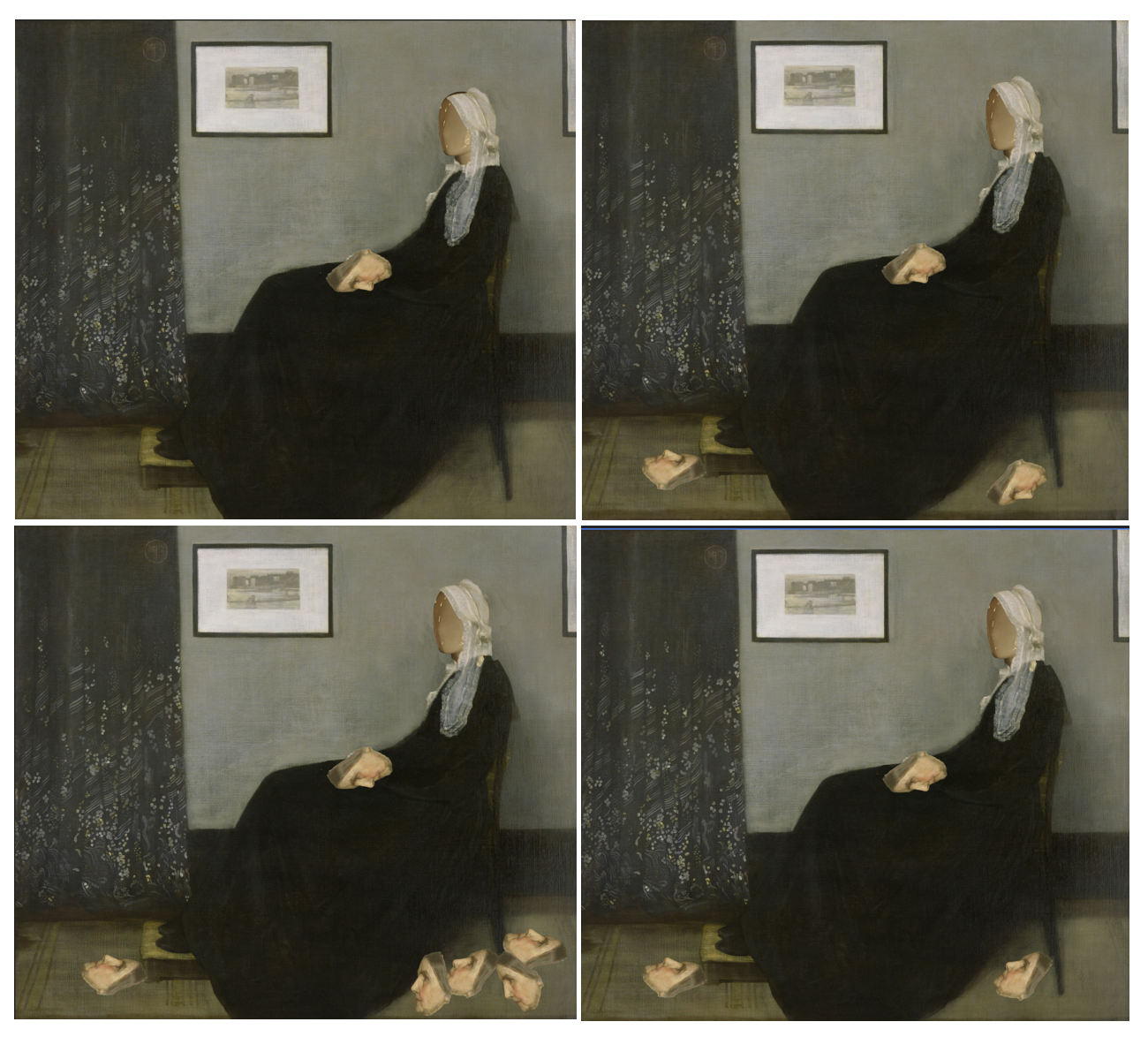Identity Collapse is a digital collage work comprising four variations of a manipulated version of James McNeill Whistler’s Arrangement in Grey and Black No. 1 (Portrait of the Artist’s Mother). The piece reconfigures this canonical portrait by replacing the sitter with a shop mannequin ─ a gesture of both erasure and substitution. Presented as a 2×2 grid, the work stages a visual and conceptual breakdown: a slow dissolution of selfhood, intimacy, and authenticity.
The mannequin’s head is smooth, blank, and devoid of emotion. In the first image, it appears as a simple swap ─ the mother now rendered as idealised, plastic, consumer-friendly. But as the sequence progresses, additional faces begin to appear, scattered across her lap, footstool, and the floor beneath her chair. These are not variations; they are other selves ─ expressions, identities, perhaps even memories. The figure becomes a kind of cabinet, archive, or shrine to what has been removed or replaced.
The title Identity Collapse speaks to multiple interpretations. It refers to the collapse of the individual under the weight of imposed ideals ─ particularly gendered, maternal, and moral ideals embedded in Western portraiture. It also suggests the collapse of visual coherence in a time where digital manipulation, corporate branding, and AI-generated imagery saturate and flatten our understanding of the self. Finally, it alludes to the emotional consequences of performing identity as something stable, consumable, or aspirational.
Whistler’s original work offers a quiet reverence, often read as nostalgic or dignified. But here, that stillness is revealed as something more precarious ─ a site of tension. The maternal figure does not resist; she holds the face in her lap, cradling it like a broken relic or a personal grief. Later, the faces multiply and lose their order. What was once a portrait becomes an inventory of loss.
The piece invites public interpretation without demanding a single conclusion. Is this the dehumanisation of the self through commercial aesthetics? A critique of family as institution? A meditation on ageing, absence, and visibility? Or all of these at once?
In a gallery context, the 2×2 grid format reinforces the idea of repetition and mass production ─ recalling not only fine art diptychs but also shop windows, fashion lookbooks, or surveillance footage. It becomes not just a portrait, but a system of display.
Ultimately, Identity Collapse does not mourn the original subject ─ it exposes what she has become. Not a woman. Not a mother. But a surface, a symbol, a version of us we can no longer reach.
Identity Collapse is presented as a 2×2 grid of archival pigment prints on Hahnemühle Photo Rag, each panel measuring 40 × 32 cm, for a total installed size of approximately 90 × 75 cm including spacing.
